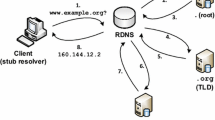Abstract
GGSN is the gateway GPRS support node. Internetworking between external data packets and GPRS networks is the main function of the GGSN. To an outsider GGSN acts like a subnetwork as it conceals GPRS software. The GGSN, when it receives data for a specified user, it first checks if the user is an active user and if the user is active then it forwards data to the SGSN, otherwise it is discarded. The GGSN stores various fields of customer data such as MSNID, the NAT port block, allocation and deallocation time and so on. All telecom companies use the process of natting. Natting is a concept in which each public IP is shared by 1500 private IPs. It is also mandatory for telecom companies in India to follow TRAI regulations for storing of telecom data. TRAI requires data of the past 7 years to be stored. Cyber cells tracking cybercrimes, when investigating a case can only trace back to the public IP of the telecom company and without permission from the telecom company they have no access to the files. Even after gaining access, to go through several million logs to find the correct log is a time-consuming and exhausting process. This paper presents an application which allows fast searching through GGSN logs to produce efficient results in a much shorter period of time. Work which would otherwise take several hours can be accomplished in minutes. The application helps enforce security by making the process of tracking these malicious end users, through a large amount of data, easy and fast.
Access this chapter
Tax calculation will be finalised at checkout
Purchases are for personal use only
Similar content being viewed by others
References
Tang, S., Li, W.: Modelling and evaluation of the 3G mobile networks with hotspot WLANs. Int. J. Wireless Mobile Comput. 2(4), 303–313 (2007)
Mishra, A.: Performance and architecture of SGSN and GGSN of general packet radio service (GPRS). Global Telecommunications Conference, GLOBECOM ‘01. IEEE, vol. 6, pp. 3494–3498 (2001)
Rotharmel, S.: IP based telecom power system monitoring solution in GPRS networks. In: 29th International Telecommunications Energy Conference, INTELEC 2007, pp. 769–774, Sept 30–Oct 4 2007
Jacobs, A.: The pathologies of big data. Commun. ACM 52(8), 36–44 (2009)
Laurila, J.K., et al.: The mobile data challenge: Big data for mobile computing research. Pervasive Computing. No. EPFL-CONF-192489 (2012)
Oliner, Adam, Ganapathi, Archana, Wei, Xu: Advances and challenges in log analysis. Commun. ACM 55(2), 55–61 (2012)
Ergenekon, E.B., Eriksson, P.: Big Data Archiving with Splunk and Hadoop (2013)
Cuzzocrea, A., Song, I.Y., Davis, K.C.: Analytics over large-scale multidimensional data: the big data revolution!. In: Proceedings of the ACM 14th international workshop on Data Warehousing and OLAP. ACM (2011)
Chamarthi, Prasad, S., Magesh, S.: Application of splunk towards log files analysis and monitoring of mobile communication nodes. (2014)
Dean, J., Ghemawat, S.: MapReduce: simplified data processing on large clusters. Communications of the ACM 51.1. pp. 107–113 (2008)
Barrachina, A.D., O’Driscoll, A.: A big data methodology for categorising technical support requests using hadoop and mahout. J. Big Data 1(1), 1 (2014)
Stearley, J., Corwell, S., Lord, K.: Bridging the gaps: joining information sources with splunk. In: Proceedings of the 2010 Workshop on Managing Systems via Log Analysis and Machine Learning Techniques. USENIX Association, 2010
Splunk docs. http://docs.splunk.com/Documentation/Splunk/6.2.1/Data/Configureyourinputs#Use_the_CLI
Splunk docs. http://docs.splunk.com/Documentation/Splunk/6.2.1/Viz/BuildandeditdashboardswithSimplifiedXML
Author information
Authors and Affiliations
Corresponding author
Editor information
Editors and Affiliations
Rights and permissions
Copyright information
© 2016 Springer Science+Business Media Singapore
About this paper
Cite this paper
Aditya Pan, Anwesha Mal, Shruti Gupta (2016). Application for Identifying and Monitoring Defaulters in Telecom Network. In: Pant, M., Deep, K., Bansal, J., Nagar, A., Das, K. (eds) Proceedings of Fifth International Conference on Soft Computing for Problem Solving. Advances in Intelligent Systems and Computing, vol 437. Springer, Singapore. https://doi.org/10.1007/978-981-10-0451-3_51
Download citation
DOI: https://doi.org/10.1007/978-981-10-0451-3_51
Published:
Publisher Name: Springer, Singapore
Print ISBN: 978-981-10-0450-6
Online ISBN: 978-981-10-0451-3
eBook Packages: EngineeringEngineering (R0)




